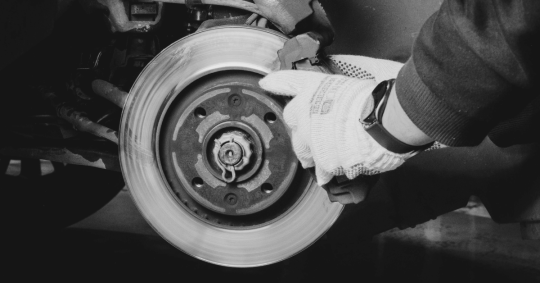Military-Grade Brake Components for Defence Vehicles and Equipment

Braking systems are one of the most critical parts of any vehicle, but in military and defence settings, the demands are much higher. Whether it’s an armoured personnel carrier on rough terrain or a logistics vehicle moving heavy loads, the brakes must perform under pressure, every time.
Military brake components are built for strength, reliability and control. They need to handle extreme temperatures, heavy use and fast stopping, often in harsh or unpredictable environments. Knowing how these systems work and what makes them different can help maintenance teams, procurement leads and operators make smarter decisions in the field or workshop.
Here’s what you need to know about military-grade brake components, what they’re made of, how they work and what signs of wear to watch for.
What Makes a Brake Component ‘Military-Grade’?
Military-grade brake parts aren’t just standard components in green paint. They’re engineered for extremes. That includes heavier loads, faster braking response and longer lifespans between services.
These components are usually:
- Built from reinforced materials like sintered metals, ceramic composites or high-carbon steel
- Designed to perform in wide temperature ranges, from sub-zero cold to desert heat
- Protected against corrosion and impact with coatings or sealed housings
- Compatible with run-flat and high-mobility systems in armoured or tactical vehicles
Braking systems in defence vehicles also often use dual or redundant systems. That way, if one system fails due to damage or wear, the vehicle can still stop safely using the backup.
Key Brake Components in Defence Equipment
Let’s break down the core components and what sets them apart in military settings.
1. Brake Discs and Drums
Brake discs and drums take the brunt of the stopping power. In military vehicles, they’re larger and thicker than in commercial systems to handle extra heat and stress.
They’re often made from high-strength alloys with anti-corrosion treatments. In tracked vehicles or heavier wheeled vehicles, ventilated or slotted discs help reduce heat build-up. Cracking or warping due to repeated high-stress stops is a common issue, so these parts must be inspected often.
2. Brake Pads and Linings
Pads and linings grip the discs or drums to create the stopping force. Military-grade materials include aramid fibres, metallic blends or carbon-based compounds. These materials last longer and provide better friction under pressure.
Noise, reduced stopping power, or a burning smell are signs that pads may be worn or overheating. Defence vehicles often use sensors or manual checks to track wear levels.
Callipers clamp the pads against the discs. In defence systems, these are often heavy-duty with large piston bores. Some use hydraulic actuation, while others are air-over-hydraulic or fully pneumatic, depending on the system.
Hydraulic lines and seals must be checked regularly. A drop in pressure, fluid leaks or slow response times may point to internal wear or contamination.
4. Parking and Emergency Brake Systems
These systems act as backups or to hold the vehicle in place on slopes or in transport. In military vehicles, they must function even when the main brake system is offline.
Many use mechanical linkages or fail-safe spring systems. It’s essential to keep these clean and lubricated, especially in sandy, muddy or wet environments.
Specialised Features for Military Use
Military brake systems sometimes include features not seen in standard vehicles, such as:
- Central brake force management to balance braking across axles or track systems
- Anti-lock brake systems (ABS) adapted for off-road use
- Integrated braking and steering on tracked vehicles
- Explosion- or impact-resistant brake lines and housings
These features improve safety and performance in combat or mission-critical conditions. However, they also require specialised parts and training to be serviced properly.
Signs of Brake Wear in Defence Vehicles
Routine checks and early detection are key. Some warning signs to watch for:
- Increased stopping distance or spongy pedal feel
- Fluid leaks around callipers or master cylinders
- High-pitched squealing or grinding noises
- Excessive brake dust or heat marks on discs
- Uneven brake pad wear
In high-pressure operations, ignoring these signs can lead to brake failure. Maintenance crews should follow strict service intervals and use OEM or certified parts for all replacements.
Why Quality Matters
Braking systems in military vehicles aren’t just about performance: they’re about safety, control and mission readiness. Poor-quality parts can fail under pressure, putting lives and operations at risk.
Using approved, military-grade components means better reliability, fewer breakdowns and safer missions. It also means less downtime for servicing and longer life for the vehicle overall.
Need Help Sourcing Military-Grade Brake Parts?
At Robert Cupitt, we work with OEMs and trusted suppliers to deliver brake systems built for defence use. Whether you need callipers, discs, linings or complete assemblies, we can help you find the right component, fast.
We understand the unique needs of military operations and can support urgent repairs, upgrades or scheduled overhauls. If you’re unsure what you need or want advice on improving your fleet's braking systems, get in touch with our team.
Need help finding the right solution?
Our experienced team is here to provide expert advice and help you choose the perfect component for your application. Contact us today to discuss your requirements.